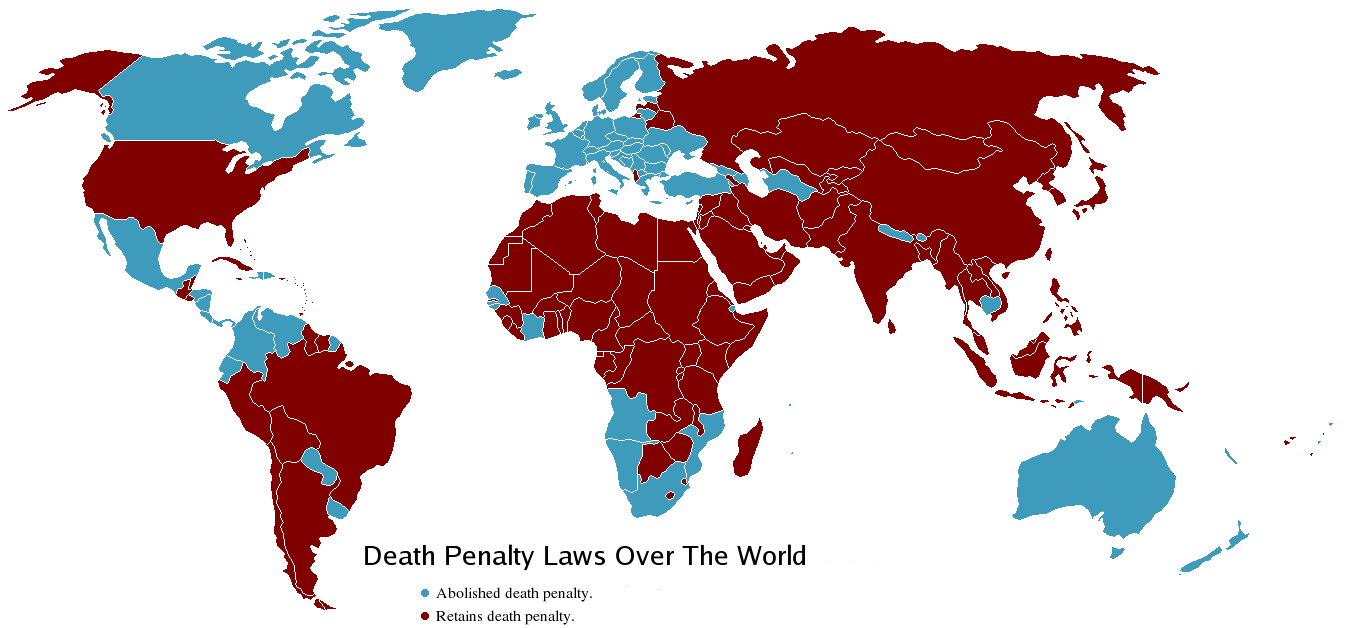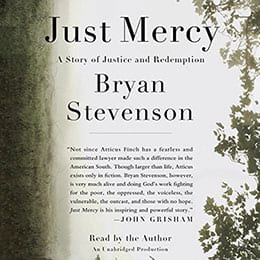One of the best things that my 12th grade high school teacher encouraged me to do was to read and watch Just Mercy, a book written by Bryan Stevenson and a film directed by Destin Daniel Cretton. Both the film and book allowed me to greater understand the importance of confronting injustice, while also standing up for those wrongly convicted.
In the United States, about 43% of all executions have involved people of color, 55% currently awaiting the death penalty, all while only accounting for 27% of the general population. When comparing defendants, one fact to note is that “as of October 2002, 12 people have been executed where the defendant was white and the murder victim black, compared with 178 black defendants executed for murders with white victims.” According to the ACLU, “a system racial bias in the application of the death penalty exists at both the state and federal level.”
But what exactly is the death penalty? What are the different forms of capital punishment and arguments for and against them?
What exactly is capital punishment?
Britannica defines capital punishment as the “execution of an offender sentenced to death after conviction by a court of law of a criminal offense,” meaning that this type of punishment would be reserved for the most dangerous of criminals.
The death penalty has been present in societies for hundreds of centuries, dating all the way back to before the establishment of Hammurabi’s Code in 18th century BC. Hammurabi’s Code laid the foundation of the death penalty for 25 different crimes; placing emphasis on theft between two groups of people. Hammurabi’s Code also established punishment as equal to the crime committed, as known from historical references as “an eye for an eye, and a tooth for a tooth.” These types of punishments were often cruel and included crucifixion, burial alive, impalement, and others.
Notable forms of Capital Punishment throughout History and Today
The Guillotine
The Guillotine, one of the older methods of execution, was introduced in France in 1792. This device fixes the head between two logs with a heavily weighted knife suspended a couple of feet in the air. This method of execution was introduced to make the process of execution “by means of a machine,” making it “as painless as possible.”
Notable figures executed by means of the guillotine as King Louis XVI and Marie-Antoinette for crimes against the French people.
Hanging
Carried out in countries in Asia, North Africa, and the Middle East, hanging is defined as suspending someone in the air as a form of execution. Death either occurs through decapitation or through strangulation, depending on the length of the rope compared to the weight of the prisoner.
Lethal Injection
Lethal Injection consists of an anesthetic alongside chemicals used to paralyze the prisoner and stop the heart. This form of punishment exists in China and Vietnam.
Surprisingly, the United States also uses the lethal injection, with the most recent execution taking place on September 24th, 2020. “Christopher Vialva was sentenced to death for the 1999 murders of Todd and Stacie Bagley.” Vialva’s execution was the 1,526th in the United States since 1976, 10th in the federal system, and the 1,346th person executed by means of lethal injection.
Although the injection is designed to kill ‘quickly’ and ‘smoothly,’ inexperience on the part of prison staff has flawed the execution process. One case in particular is that of Dennis McGuire. Reports show that after the injection was administered to Dennis McGuire, he gasped and convulsed for 10 minutes; much longer than the time that previous injections have taken to execute someone, before dying.
Electrocution
Execution by electrocution occurs when a prisoner is strapped to an electric char with a “metal skullcap-shaped electrode” attached to their scalp or forehead. Following these actions, the prisoner receives a jolt of electricity up to 2000 volts for up t o30 seconds, until the prisoner is dead.
Electrocution is a method of execution carried out in the United States, with the first electrocution taking place at Auburn Prison in New York against someone who was convicted of murdering “with an axe.”
Why the Continuation of the Death Penalty Creates a Gray Area
Today, “more than 70% of the world’s countries have abolished capital punishment.” Countries today that still have the death penalty range from countries with large populations under authoritarian rule, with the United States being the outlier as the only democracy with it in place.

According to the Embassy of the United States of America, capital punishment still exists due to the inability of the federal government to dictate laws to the states. Although the United States has been one of the foremost leaders in reforming capital punishment, other countries have had an easier time in abolishing it by “national governments imposing top-down reform because they decided the death penalty was no longer necessary or legitimate.” And since the Constitution allocates criminal law to the states, only they can repeal their own capital punishment laws. The Supreme Court is the only national-level body capable of declaring capital punishment unconstitutional.
Around the world, many consider implementing the death penalty a violation of human rights, especially those that require states to recognize the right to life, as shown through Article 3 of the Universal Declaration of Human Rights: “Life is a Human Right.” Although intended to curb violent crimes and atrocities committed by criminals, the loss of life through the death penalty violates “the right of life and the right to live free from torture or cruel, inhuman or degrading treatment or punishment,” which the death penalty unfortunately promotes.
Although many international organizations and countries have abolished the death penalty, like many countries of the Global North save the United States, a case can arise where the death penalty is justified, shown through Bangladesh’s approval of the death penalty for rape. With a viral video showing a group of men sexually assaulting a woman, Bangladesh’s cabinet quickly approved “to incorporate the death penalty for all of the four types of rape defined under Bangladeshi law.” Though detracting from the real problem, that rapists are normal people and not animals, the passage of the death penalty seems just, since there has been a violent outrage at the lack of enforcement on sexual violence in this part of the world.
Moral arguments for the death penalty put quite simply, is the concept of retribution, where the killing of one person justifies the death of the killer. However, opponents of this notion would counteract that point with the fact that issuing capital punishment detracts from the moral message it conveys, alongside the fact that it is fundamentally inhumane.
Despite these arguments, the inhumane action that is the death penalty cannot go unchecked. With the death of Dennis McGuire, for instance, these processes are not clean and fraught with mistakes leading to the disgusting and horrific death of inmates.
“The death penalty has no place in the 21st century” – António Guterres
Overall, the “death penalty is not a useful instrument for combating crime.” Abolishing the death penalty in the United States can allow other countries to ensure the right to life for all people, while also ensuring that the absolute worst of punishments cannot be enforced differently based on a person’s status, color, race, or underlying distinctions.
“The death penalty is the ultimate cruel, inhuman and degrading punishment.” – Amnesty International


